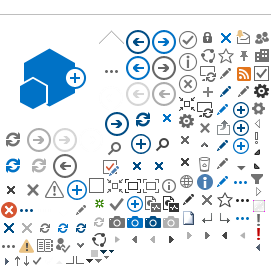SANCOR NEWSLETTER ISSUE NUMBER 173
MAY/JUNE 2003
PAGE 2
REPORT ON RESEARCH CRUISE M57-1
Seven South African marine scientists were invited to join the first leg of a research cruise from Cape Town to Walvis Bay in February 2003 aboard the F.S. Meteor. M57-1 was led by Dr Ralph Schneider from the Universität Bremen, Germany. Twenty-one of the twenty-nine-member scientific team came from Universität Bremen and one, Prof Rainer Zahn, from the University of Barcelona. The South African contingent comprised of marine scientists with various levels of expertise from experienced lecturers and researchers to the novice students. The team members were Dr John Compton and Dr John Rogers (UCT Geological Sciences), Dr Ian McMillan (De Beers Marine), recent PhD graduate Dr Amanda Rau (UCT Geological Sciences), Ms Jenny Veitch (MSc student, UCT Oceanography), Ms Caren Herbert (MSc student, UCT Geological Sciences) and Mr Michael MacHutchon (Honours student, UCT Geological Sciences). For the students, the Meteor 57/1 cruise was their first experience on a scientific vessel, providing their first exposure to the equipment and methods used in seafloor sampling. In the past, there have been only limited opportunities for S.A. scientists (particularly students) to partake in such research cruises, so the opportunity afforded such a large group was accepted with relish. Our inclusion in the onboard working groups allowed for the active participation in the sampling of the sediments that will form the basis of the students’ respective postgraduate research projects, as well as seeing the processes involved in site selection and the deployment and recovery of the sampling equipment. It was interesting for the students to see the interaction between the different fields of geology (e.g. geophysics, geochemistry and sedimentology) and other marine sciences (micropalaeontology, oceanography, marine microbiology). They learned how data from different fields could be used to complement and supplement results in order to build up a palaeoceanographic model. Twenty-nine gravity cores (of between 2 and 10 m in length) and thirty-seven multicores (all of which were sampled on station, with lengths ranging from 10-55cm) were collected from forty-three stations. Twelve of the gravity cores were also sampled (at 5 cm intervals) on board. The general routine was shallow-seismic profiling (Parasound), in order to select sites, at night and between stations, with 2 to 3 stations a day (which could end/start at 1am). The length of time spent on station depended on the water depth (60 m = about 5 min for gravity core deployment and recovery; 3000 m = about 2 hours) and also on the number of tools deployed at one station. Multi- and gravity corers were deployed at all stations and at most of the offshore stations a rosette for water-column samples with a CTD (conductivity, temperature, depth meter) attached, as well as a plankton multinet, to sample plankton at various water depths were also deployed.
As profiling is a continuous (although at times tedious) job, each member of the scientific team was allocated 2 hr time slots in which to watch the Parasound record, which needed to be adjusted as we went inshore (shallower) or offshore (deeper). After a few
initial problems the new system began functioning fairly well, although there was always the odd hiccup when the system administrators’ help was required and to this end notices were posted "In case of trouble with parasound call Rudiger (but not after his 12pm-4am shift), or Paul (who may be in the bar)". Most days were spent sampling the gravity cores taken at previous stations (and stored in the fridge) in between sampling the multicorer or very appropriately, MUC, as it came up on station. All the samples were stored in plastic crates in various refrigerators scattered about the ship. We were given our own little space for "UTC" samples (for some reason the Germans kept confusing our university initials, UCT, with universal time co-ordinates, UTC), but the bulk of samples rapidly increased and requiring routine re-arrangement of the samples in the freezing conditions.
As the sole physical oceanographer on board the RV Meteor, Jenny Veitch was responsible for launching XBTs (expendable bathythermographs) into the sea at regular intervals between CTD stations. The XBTs record the temperature profiles up to a depth of 760m. From the collection of XBT profiles, a temperature section along a transect can be drawn up in order to get and idea of the dynamic processes such as upwelling, eddies and filaments that occur in this region.
But it’s not all work aboard the FS. Meteor: Apart from the beautiful sunsets, which were observed from various vantage points, and lunch breaks spent reading or tanning on the "beach" (observation deck) or spotting wildlife (of the marine kind), the middle of the cruise is marked by the "Hoog Bergfest", and the end of the cruise is celebrated with another party and in between the bar is open daily, with bartender, Paul Wintersteller (day job Systems Administrator), who would be fired in any commercial concern, pouring the longest "short" drinks (to which certain members of the UCT group could attest on more than one occasion). But be warned, the ship slows for no man (or woman or, as far as I can tell, west coast fishing vessel) and by the end of this cruise we were all very adept at cutting, sucking, cleaning, capping, wrapping and packing.
For all the researchers, the cruise provided the opportunity to interact with international scientists, to discuss different research methods, aims and viewpoints, as well as discuss future research possibilities. The open atmosphere and willingness to share information and ideas was a welcome experience. We would like to thank the chief scientist, Dr Ralph Schneider, for the opportunity to participate in the cruise and hope that this will lead to continued collaboration between European and South African marine scientists.
Dr Amanda Rau
University of Cape Town
Geology Department

